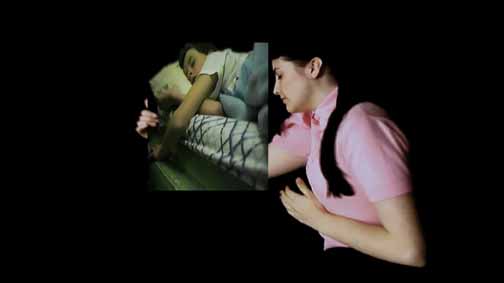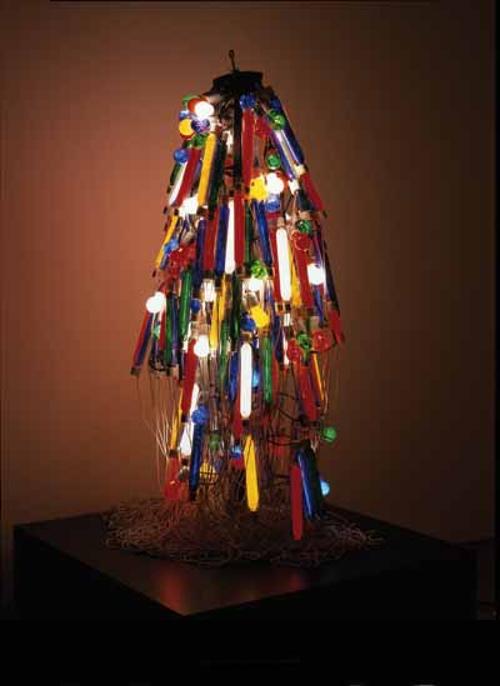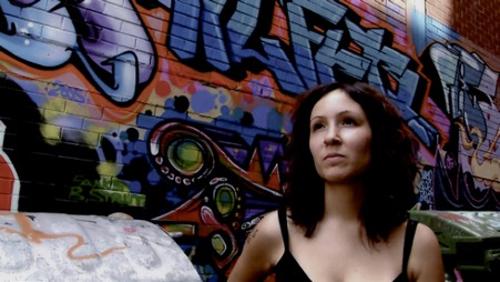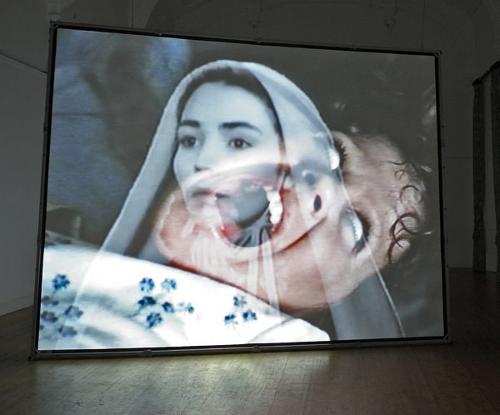
Ms & Mr (Stephanie and Richard nova Milne) once described themselves as "being diagnosed with chronic co-dependency" in that their life as a couple and the art they produce are constantly intertwined. This is perhaps one way of explaining their constant exploration of their relationship, and the way it results in art which can range from the sentimental to the deeply disturbing. But even when it is sentimental, the work created by this most creative of arts partnerships is moving rather than mawkish. Ms & Mr first came together, as both lovers and artists, when they were students at the College of Fine Arts UNSW. Their cv exists only as a collective document, there is no information on their separate lives. Their art and their relationship is the beginning and the end. After some years of making their mark in alternative venues and artist run spaces they were awarded the Lempriere Travelling Scholarship in 2005, the first time it has ever been awarded to a collaboration rather than a single artist. Heavy Sentimental is their first exhibition in a commercial gallery. The subject is not so much the depth of their experience, but the depth of their collective memory. In this they are aided by the new technology of their childhood, video cameras and the subsequent video tape archives, which is now old technology.
The narrative of this exhibition is the creation of common history, to give the viewer a sense that Ms & Mr have never been apart. Some of the imagery comes from time past when Richard's older brother teased him by obsessively recording his child sibling, turning the camera into a weapon of oppression. This archive is the raw material for the layers of meaning loaded onto the past. In Videodromes for the Alone: Teleplasmic Mass, one of the most enticing pieces, which is truly sentimental in the deepest sense of the term, the child Richard sleeps. As he dreams and tosses and turns, the adult Stephanie watches over him, echoing every shape of his body with her own. The magic of digital editing brings her into his presence, at times their hands almost touch but the child is unaware of the soul mate who never leaves his side, it is all very Twin Peaks. At one point the two even pick their noses in tandem, joined by a mystical mist. The footage, courtesy of sibling rivalry, also enables Videodromes for the Alone: Grounded Encounters, where the mature Richard extracts the footage of his past, static and all, responding as an adult to the way his child self was tormented. The tape and the circuit board of the video player become elements in the construction of memory and self. The archive of those torturing tapes are played high speed in reverse as Videodromes for the Alone: Dreamfasting. It is a great and rich archive of memory.
Stephanie apparently lacked a torturing sibling, so her childhood is a celebration of virtuoso dancing in a school performance. Videodromes for the Alone: The Lovecats. There she is, little and lively, bouncing in digitally enhanced dominance, to a background of sepia classmates, and he dances as her partner, even dressed to mimic her costume. There is intensity and yearning in the way he prances to her every move, becoming even more frenetic, until he dissolves into her conclusion.
One question that this mythology poses, is how are memories constructed: what is reality and what is fiction? There is a darker side to these works, a sense of fragility in this relationship so fully enclosed. This emerges in the drawings, which in their sinister surreal quality have echoes of David Hockney's illustrations to Grimm's Fairy Tales. In one image, Mr Described the image to Ms and She Disappeared, Stephanie is swallowed by an ancient gramophone. It is as though the technology of the past rushes to destroy present happiness. What is even more sinister is that the drawing is dated, 'Imagined 1983, enacted 2007'. Past and present intermingle; imagination and the material world collide. It is a very Jungian world within the mind and art of Ms & Mr.












